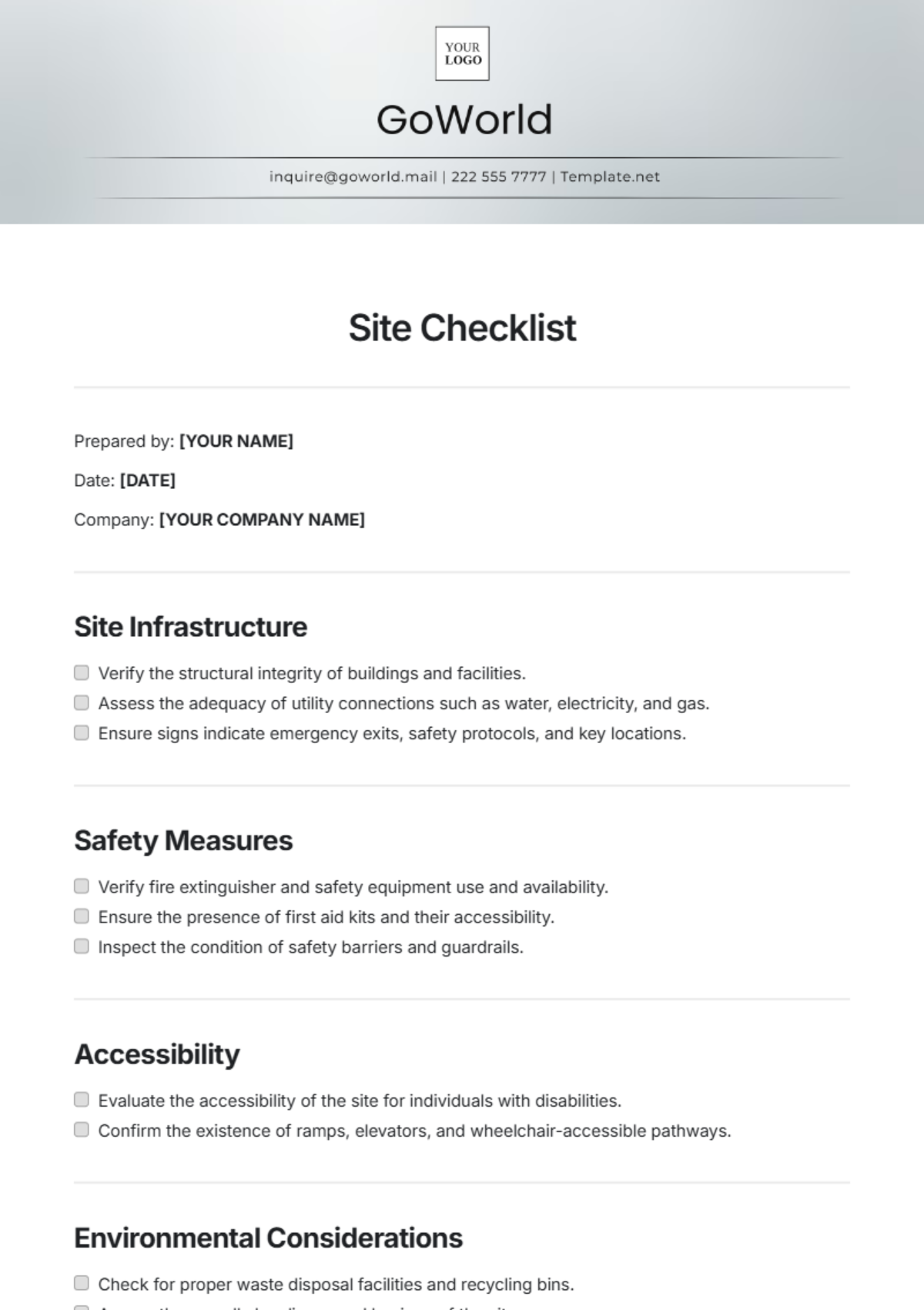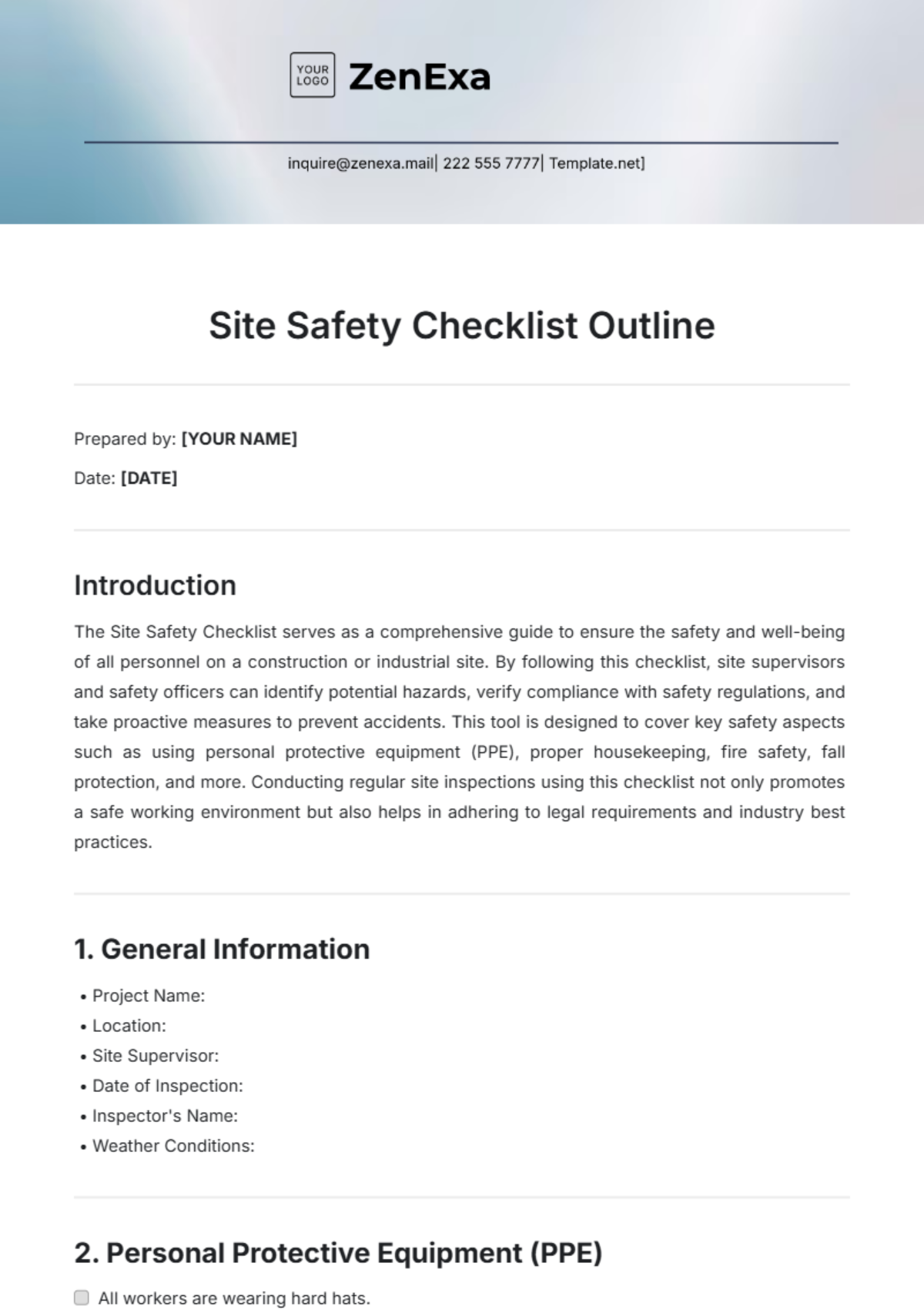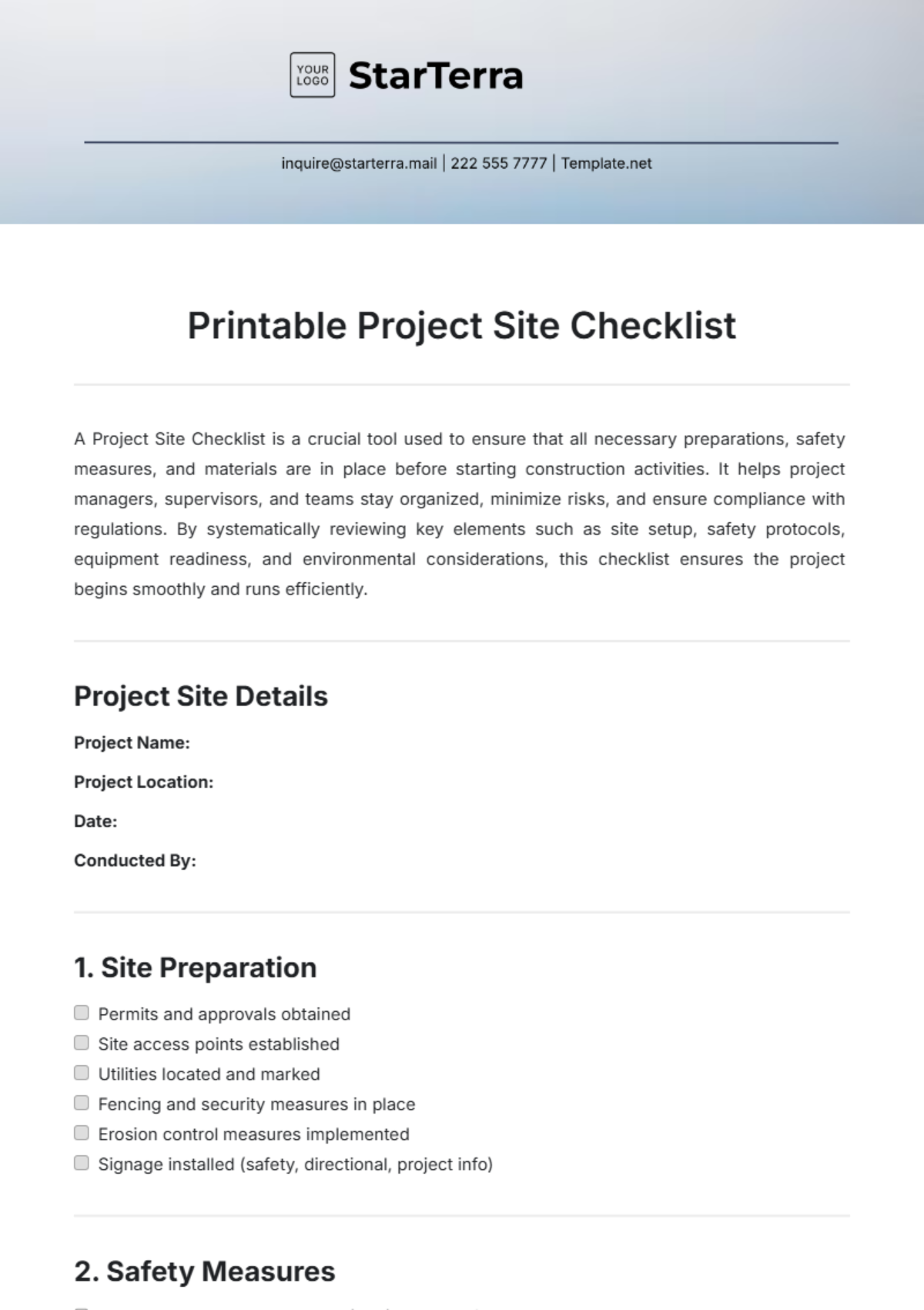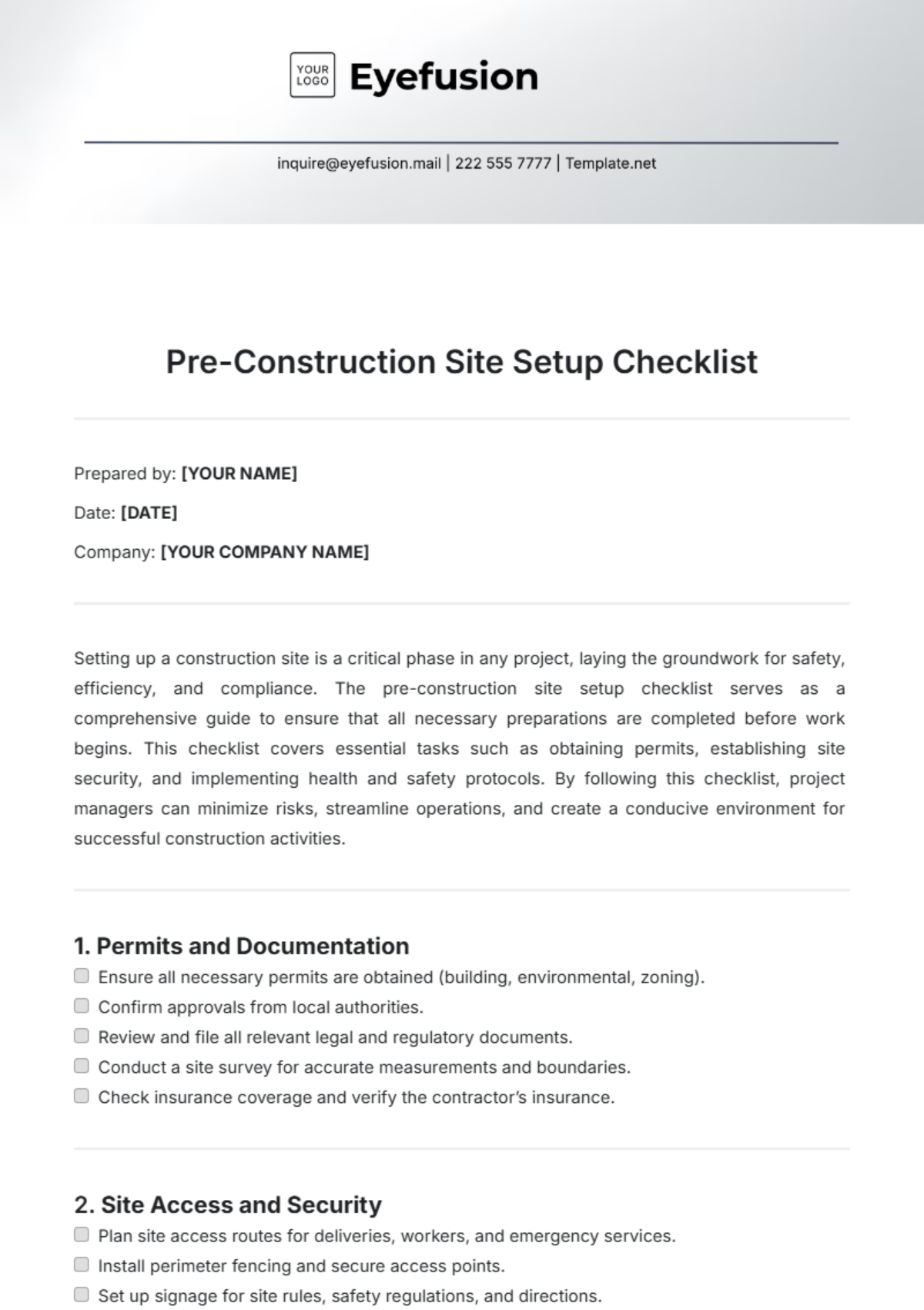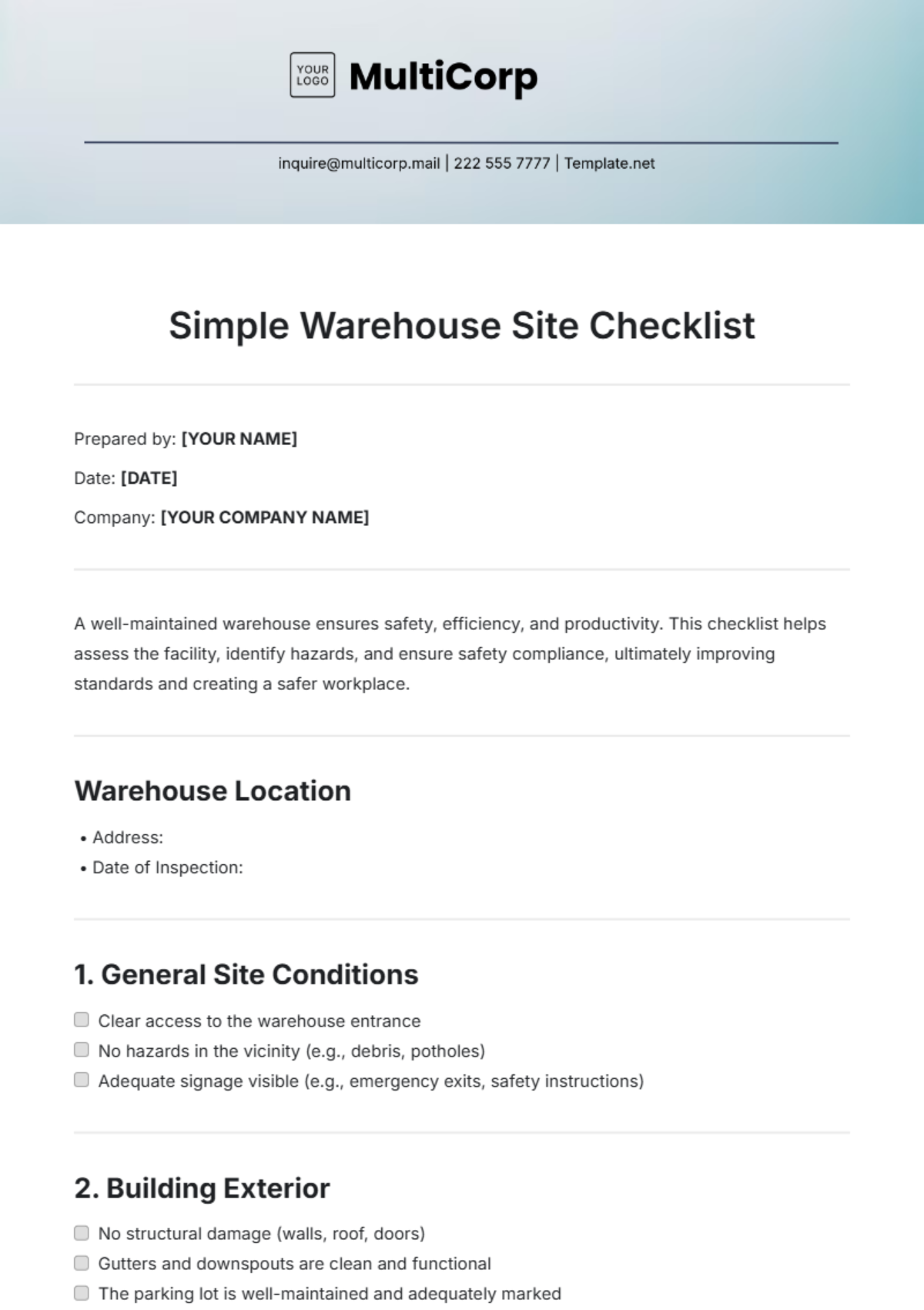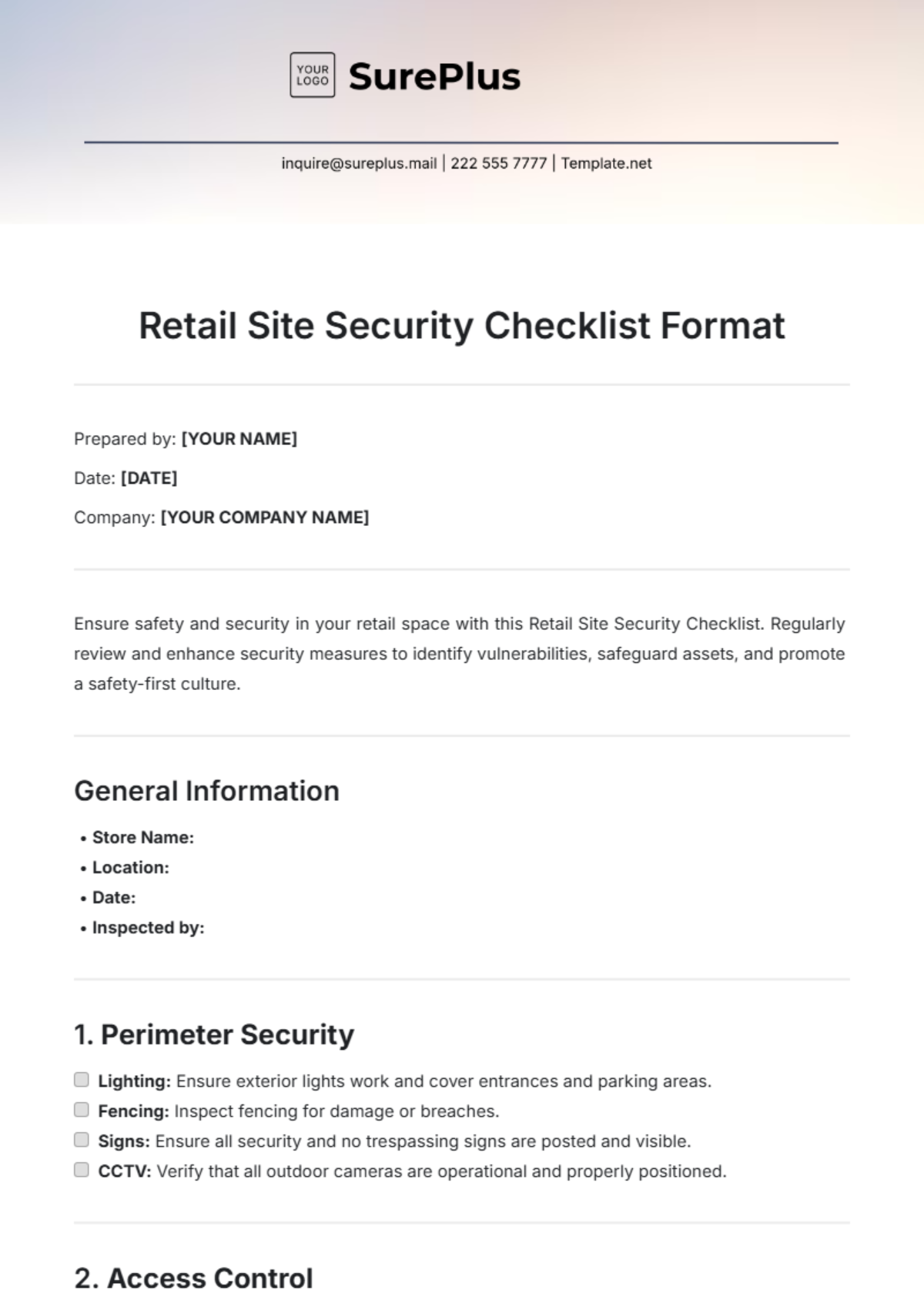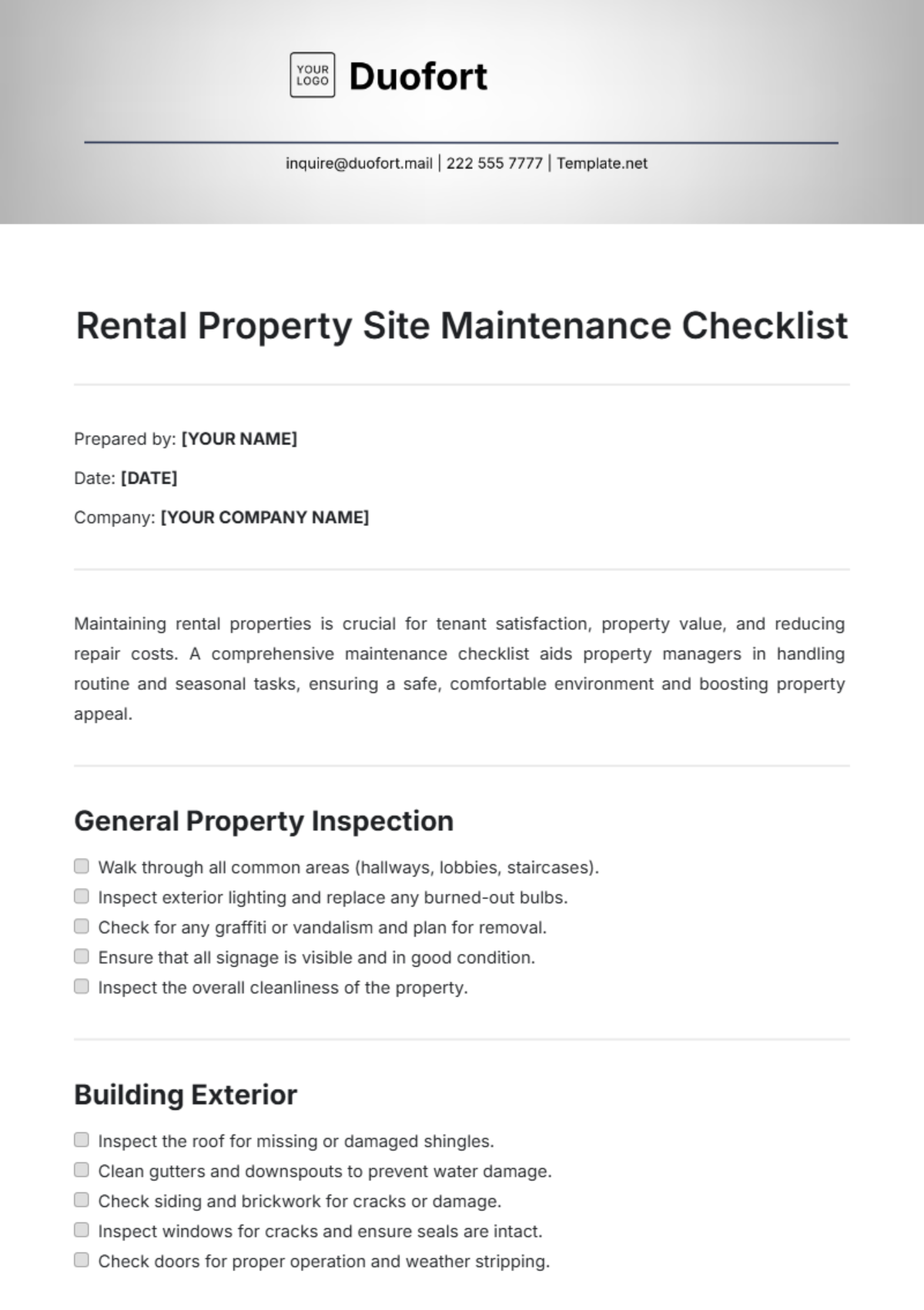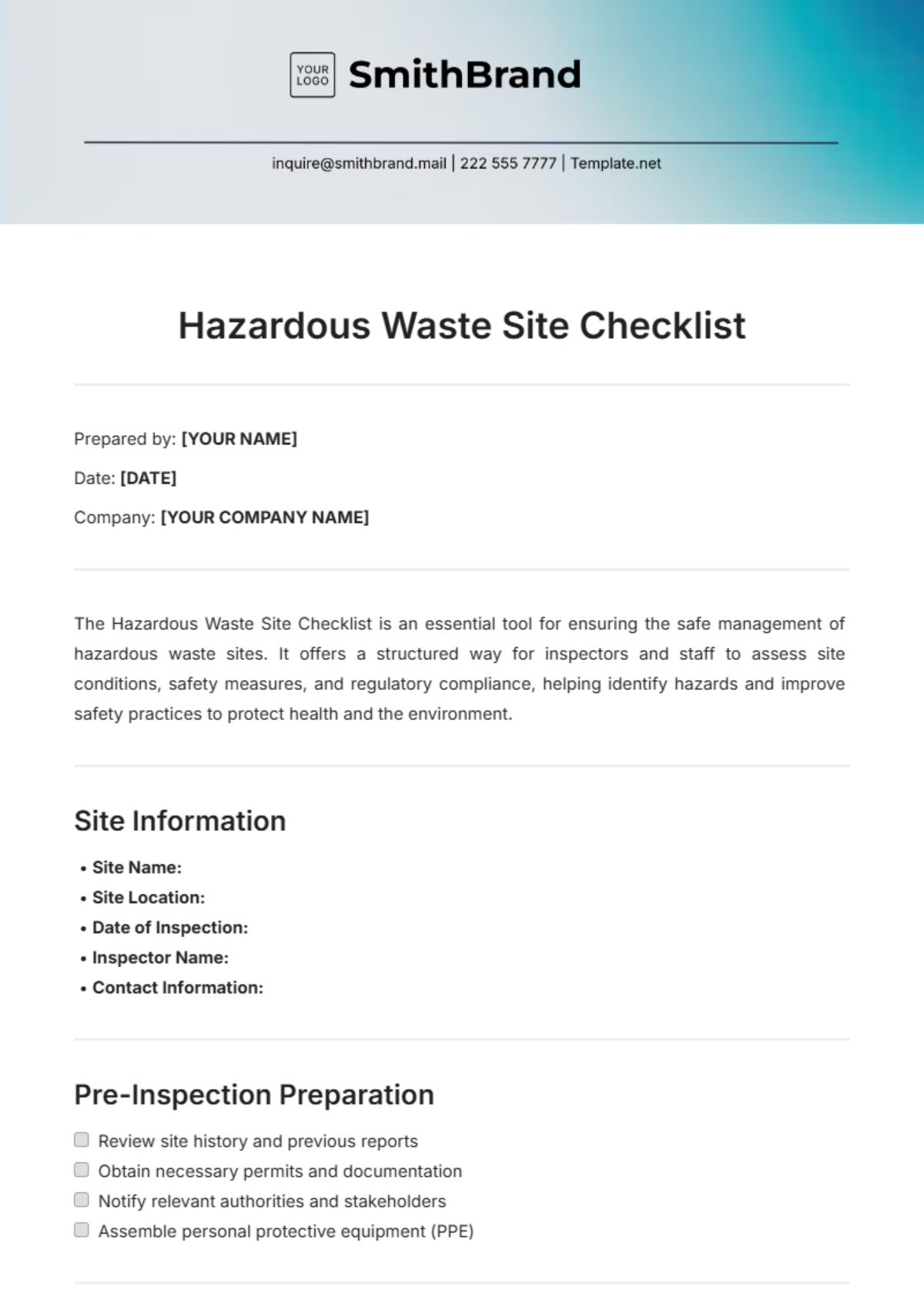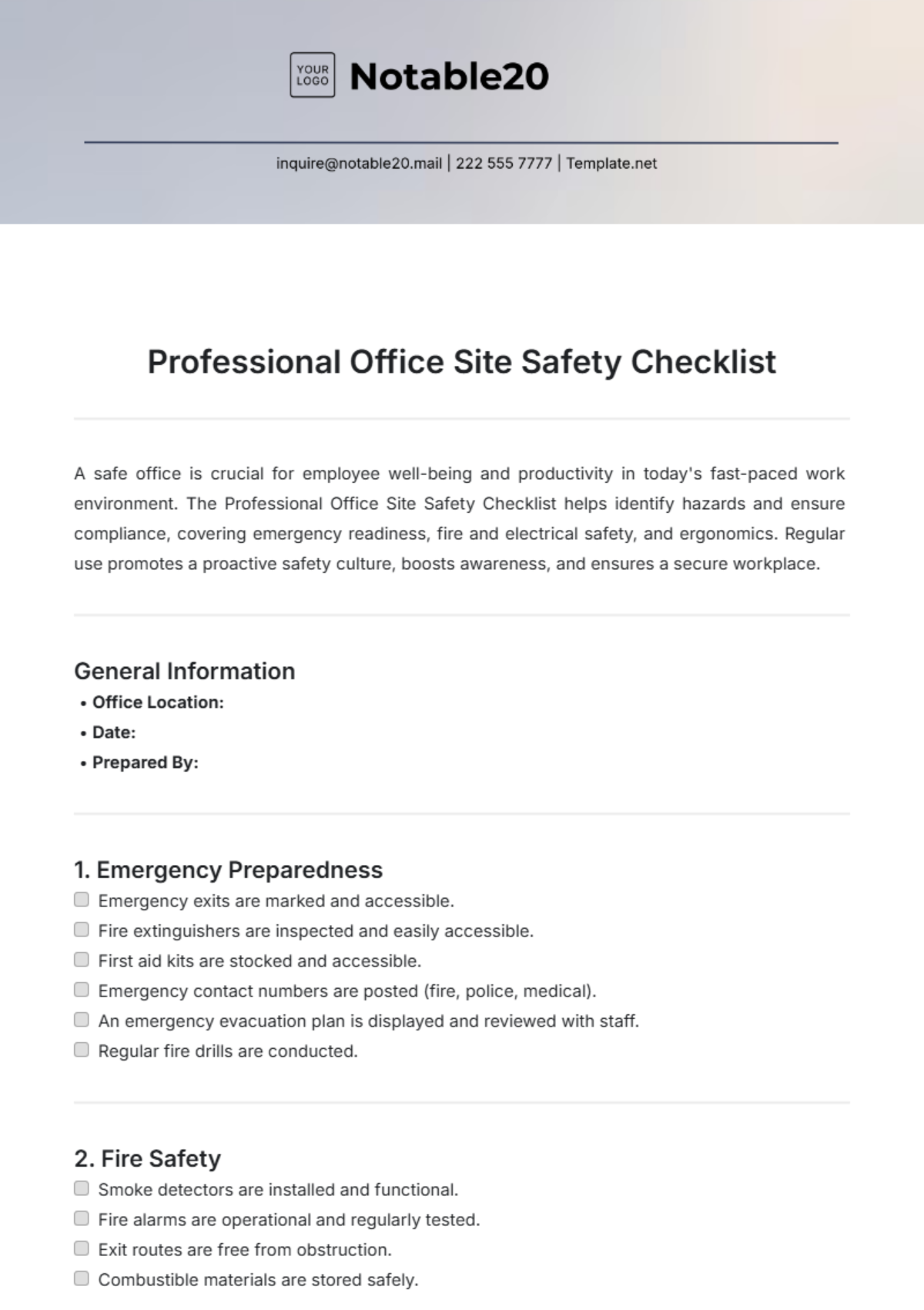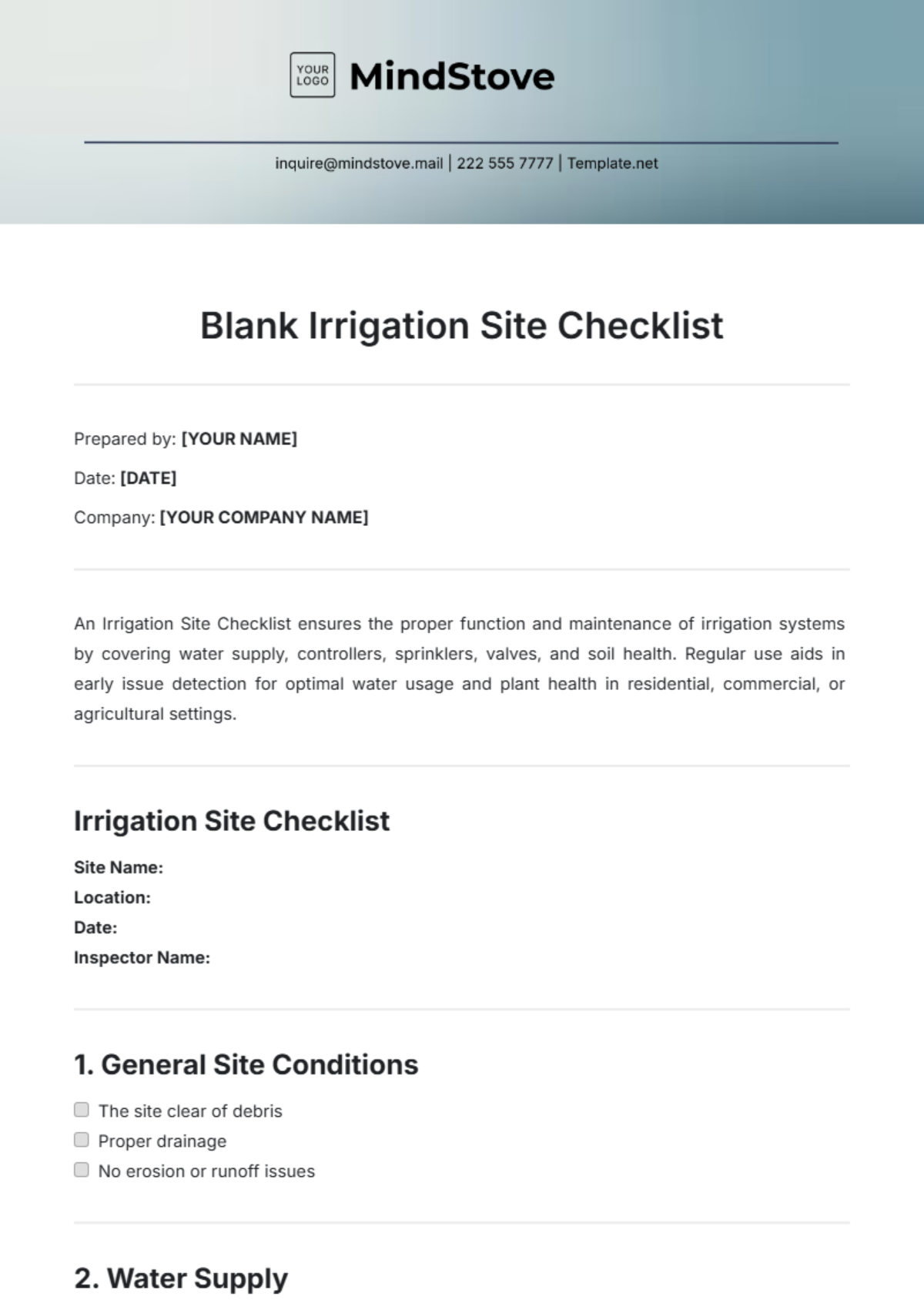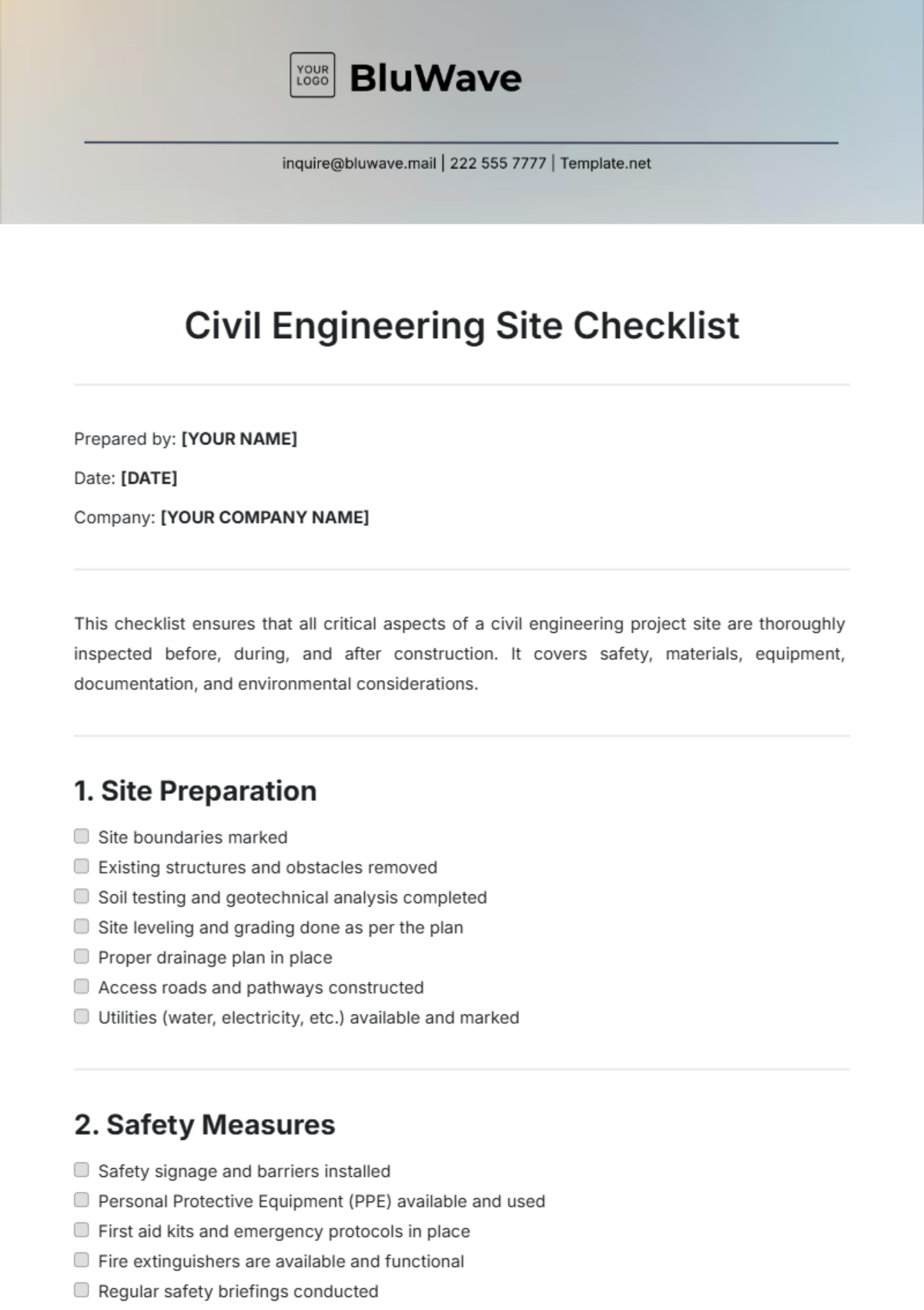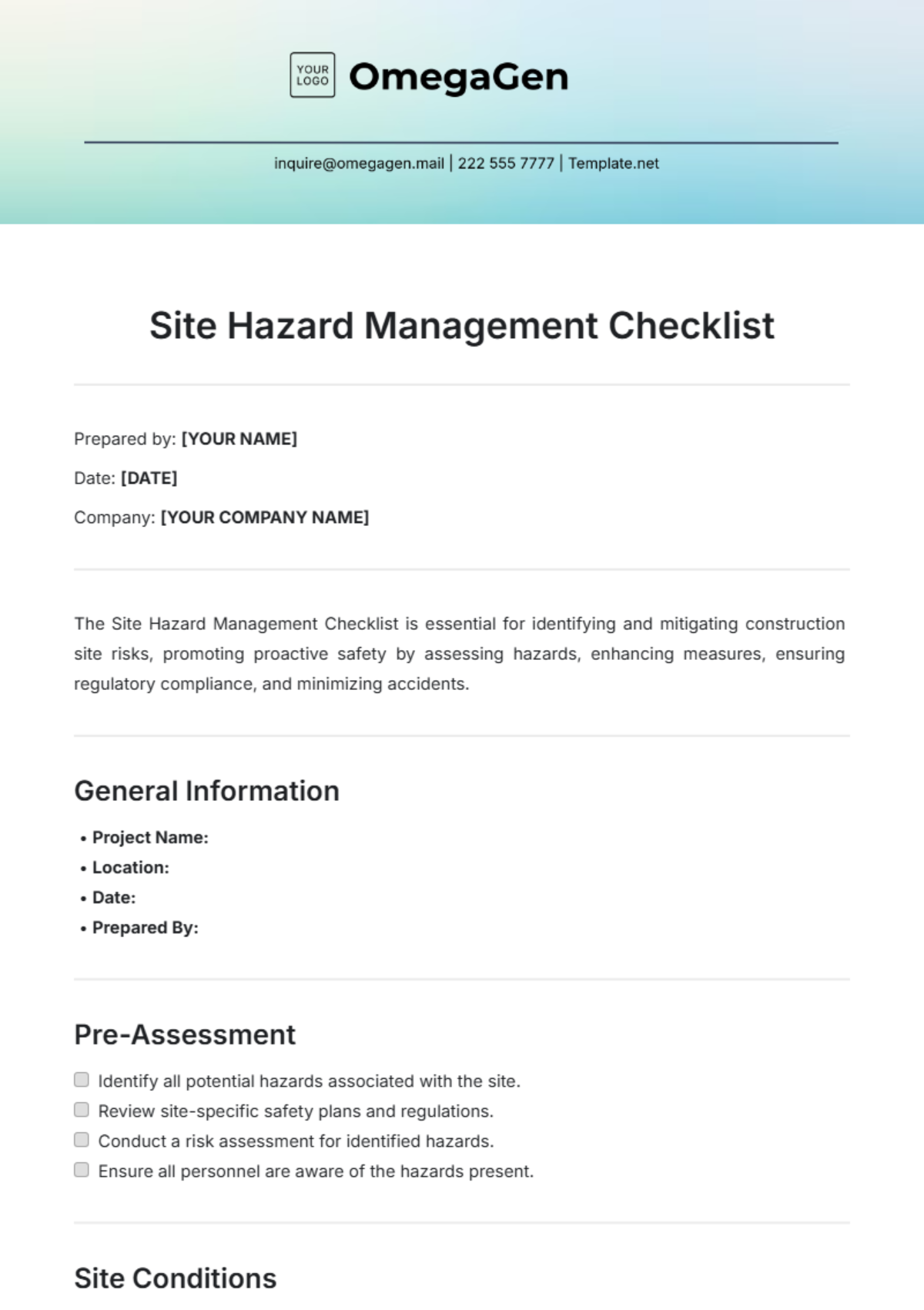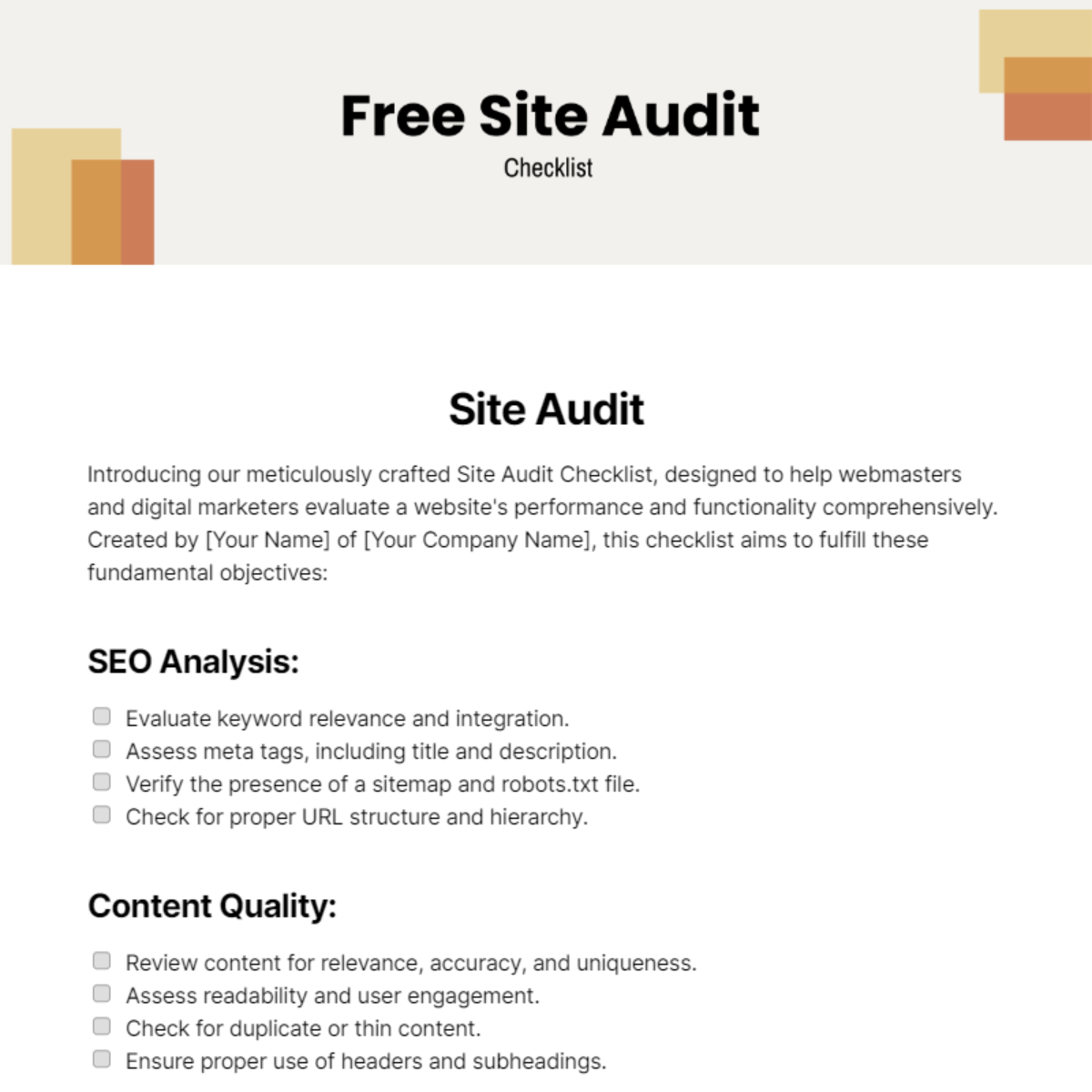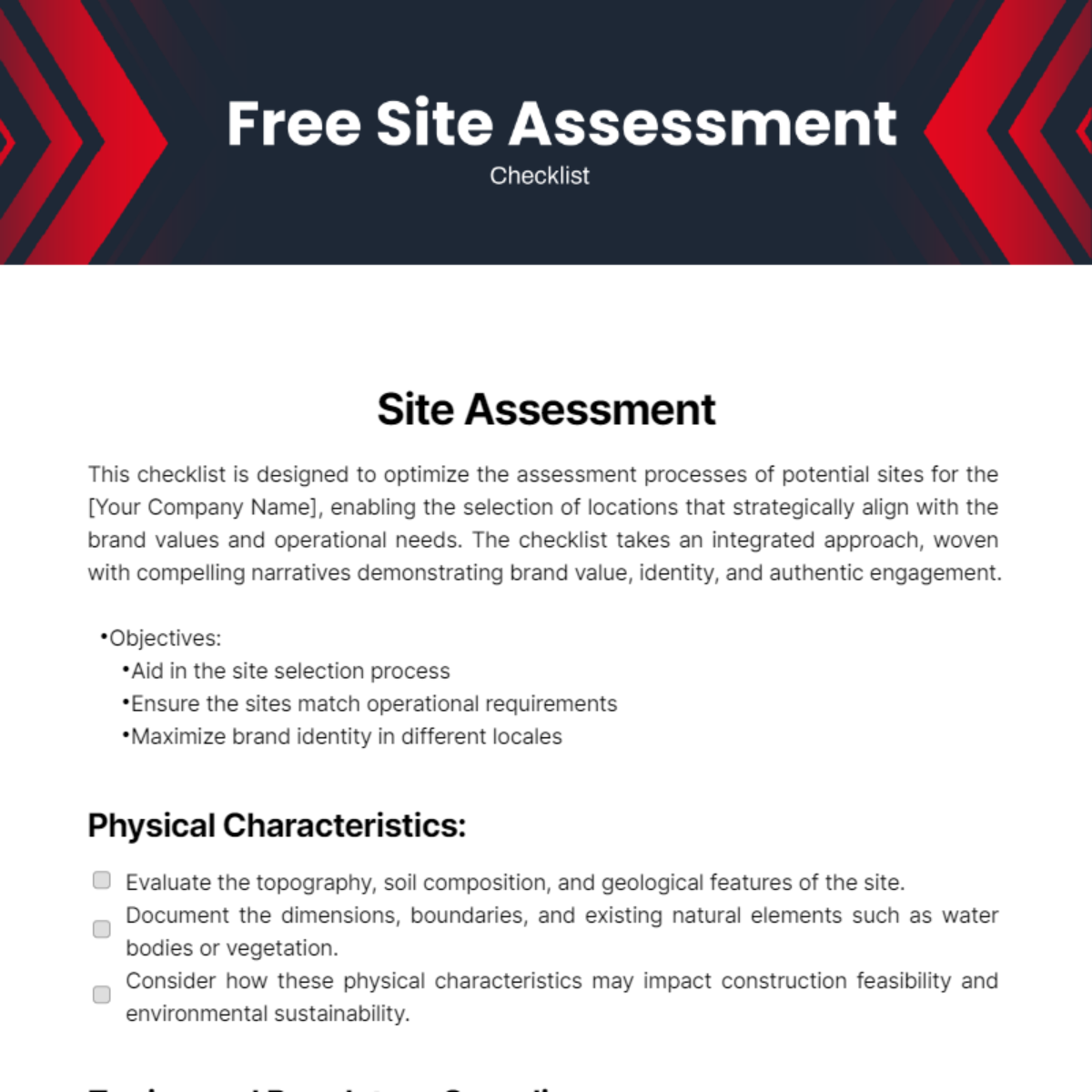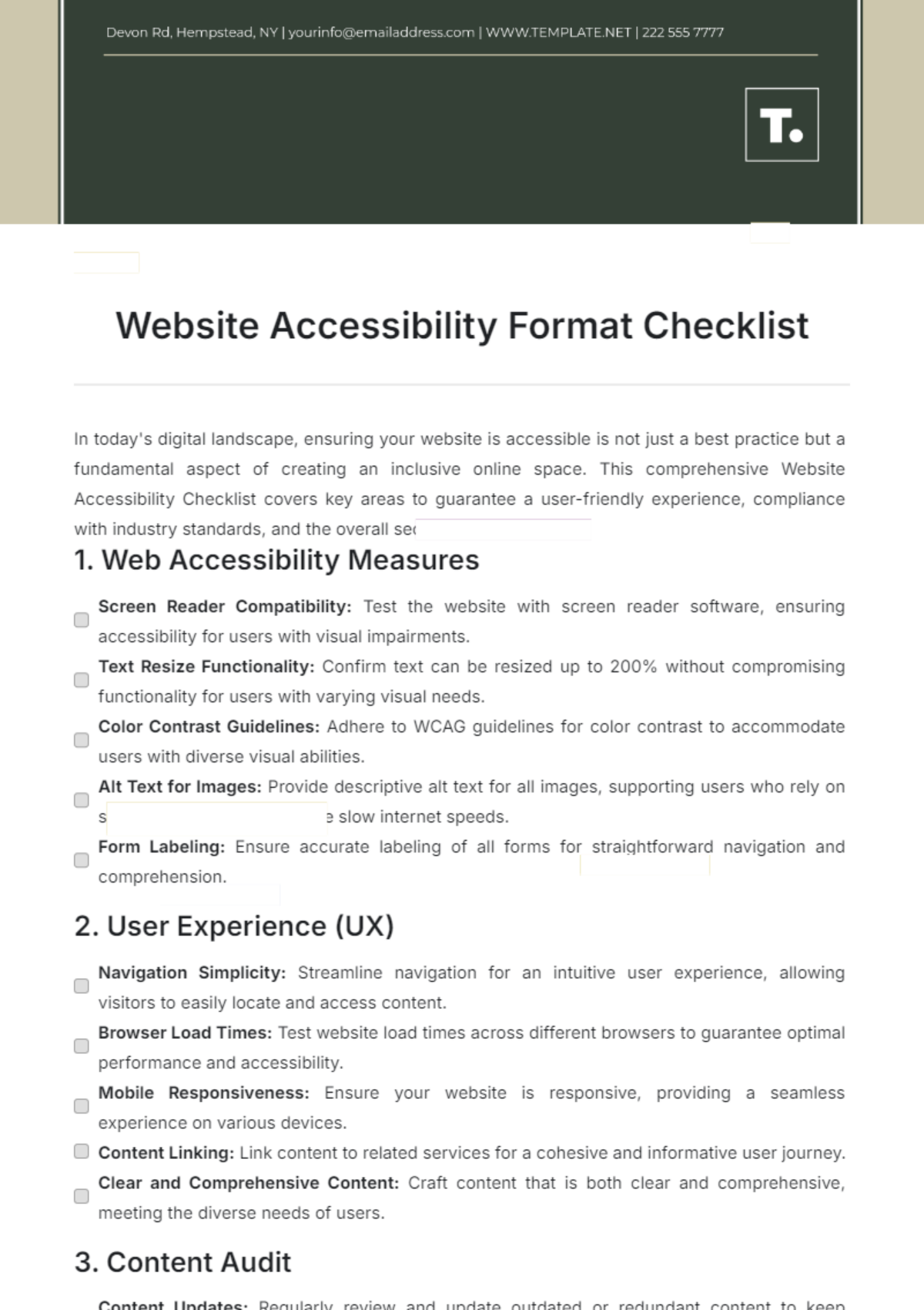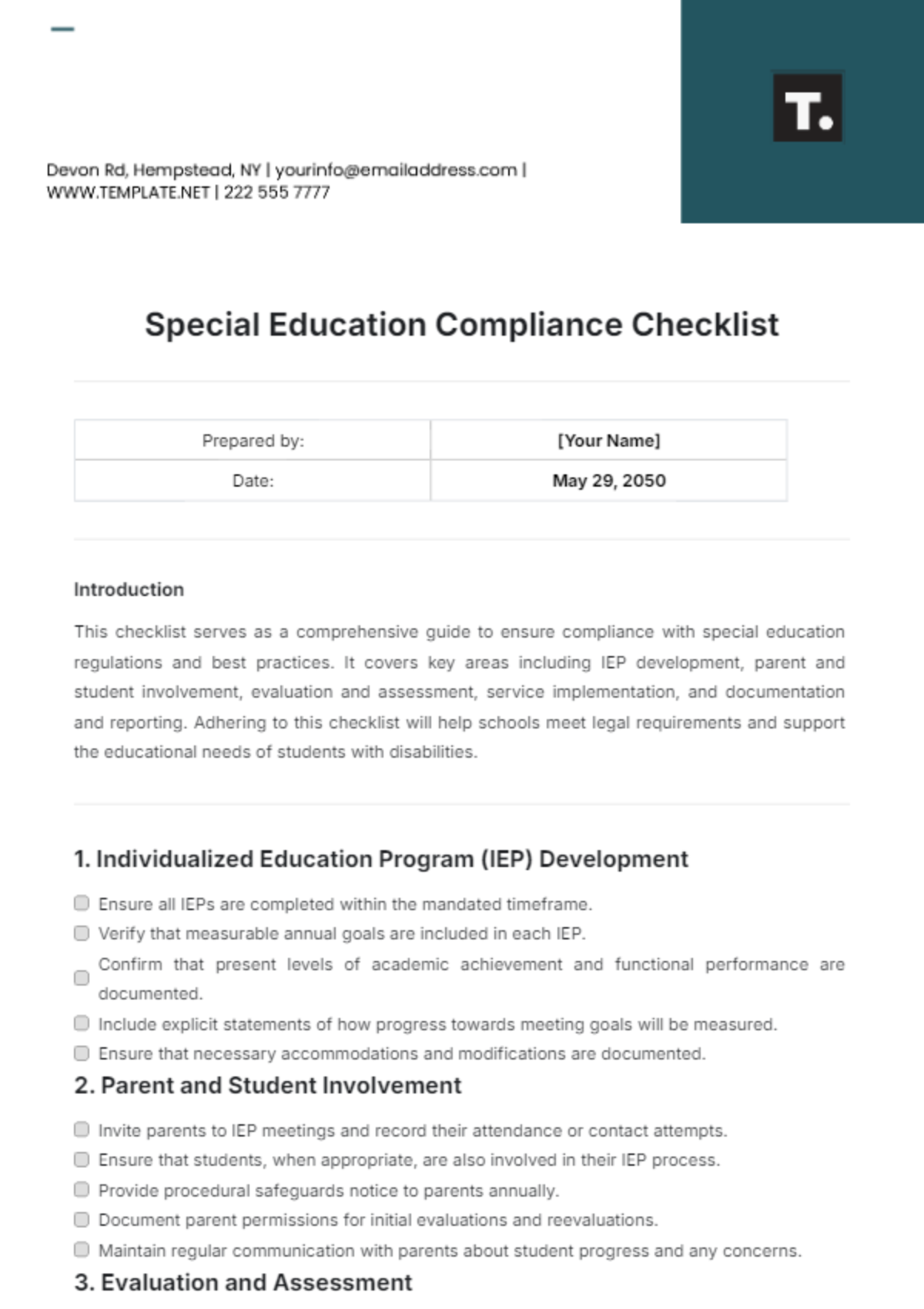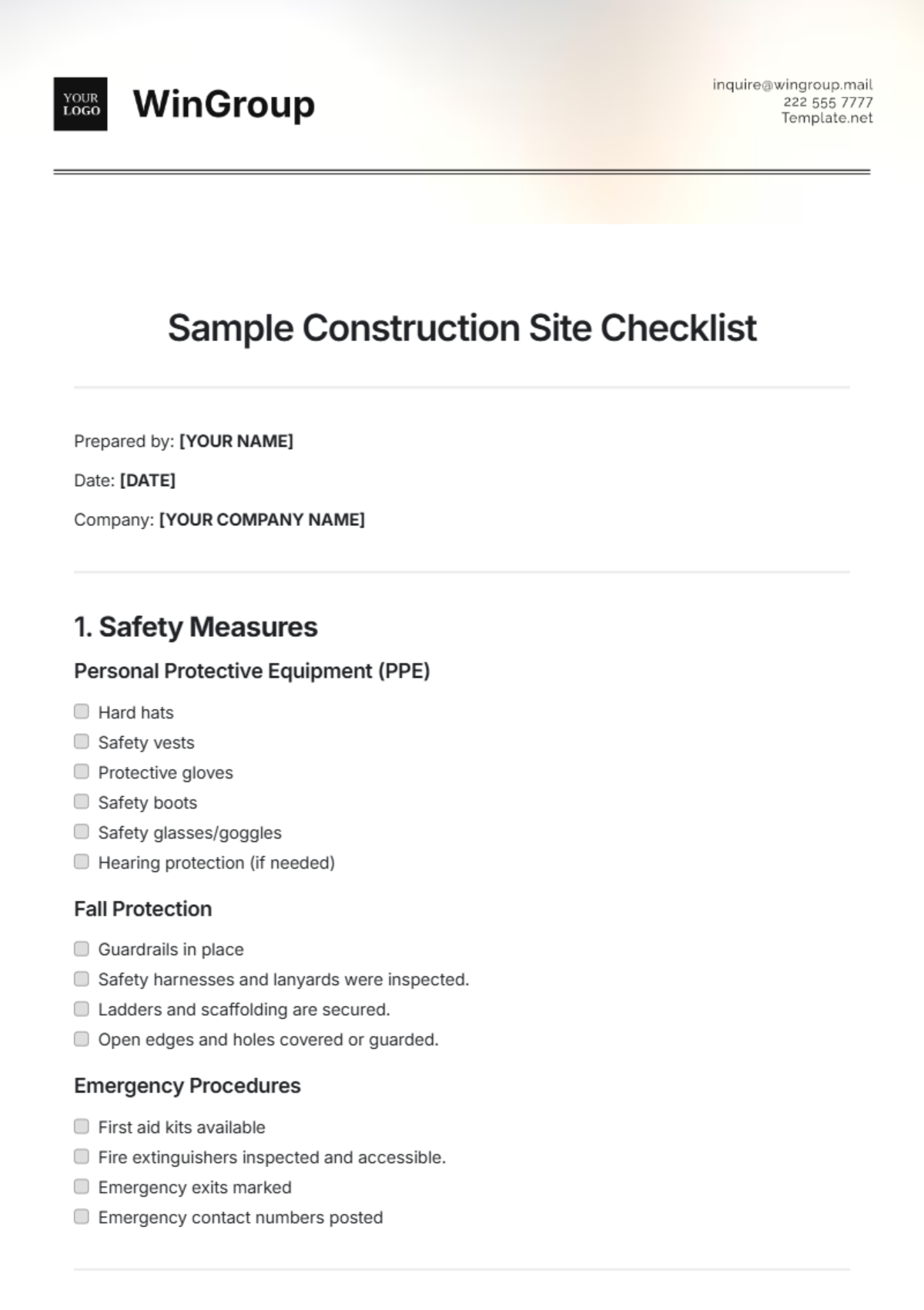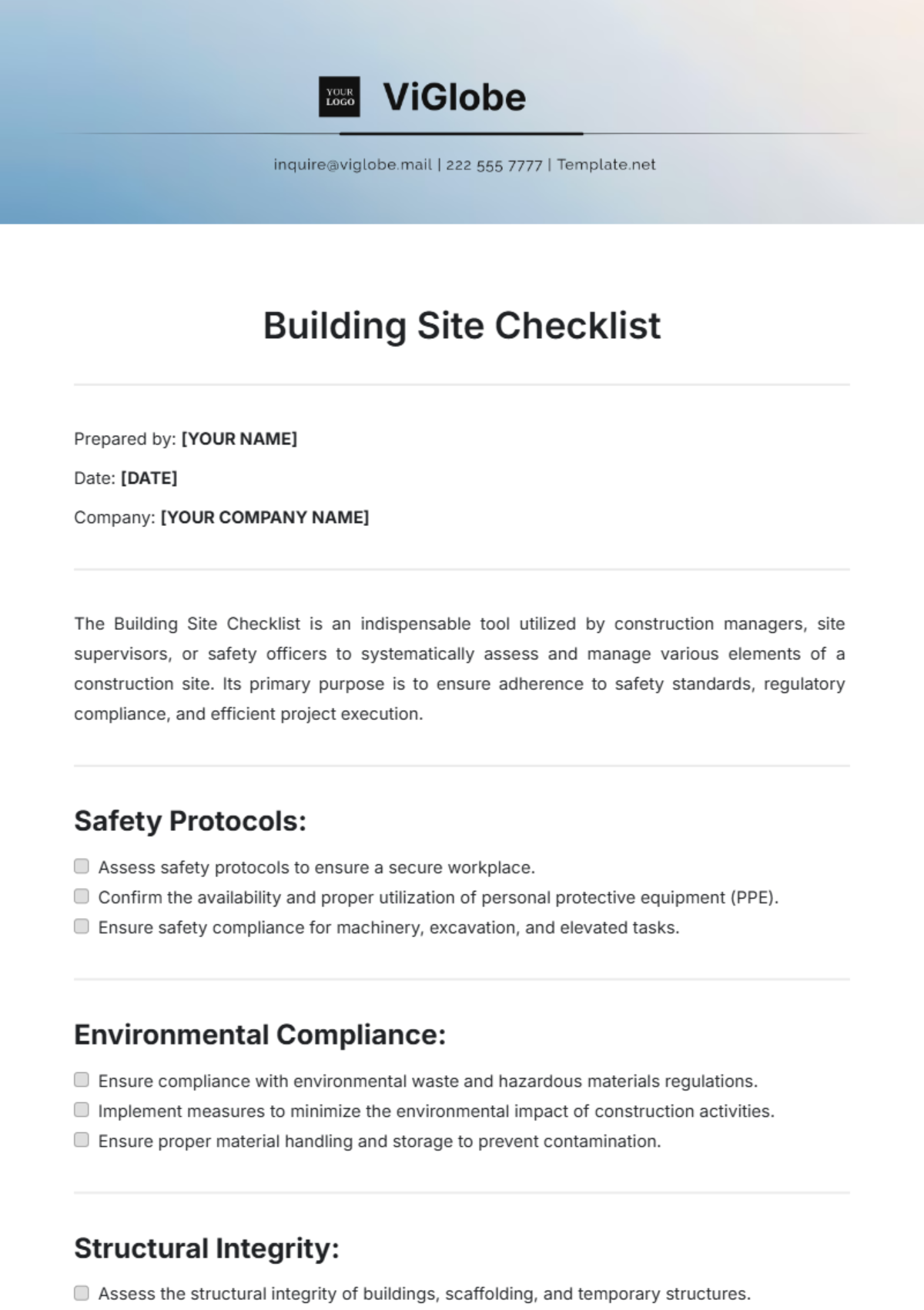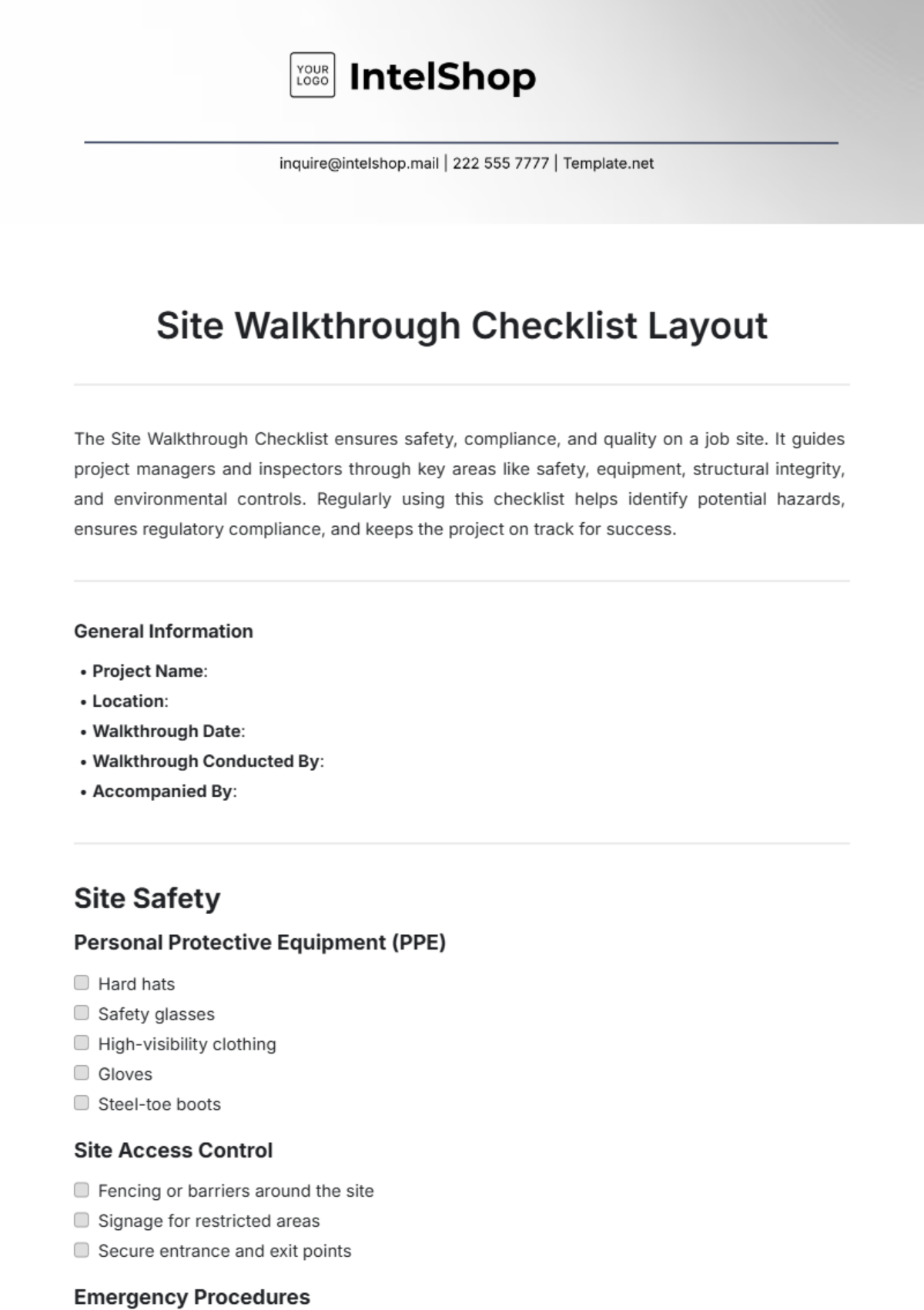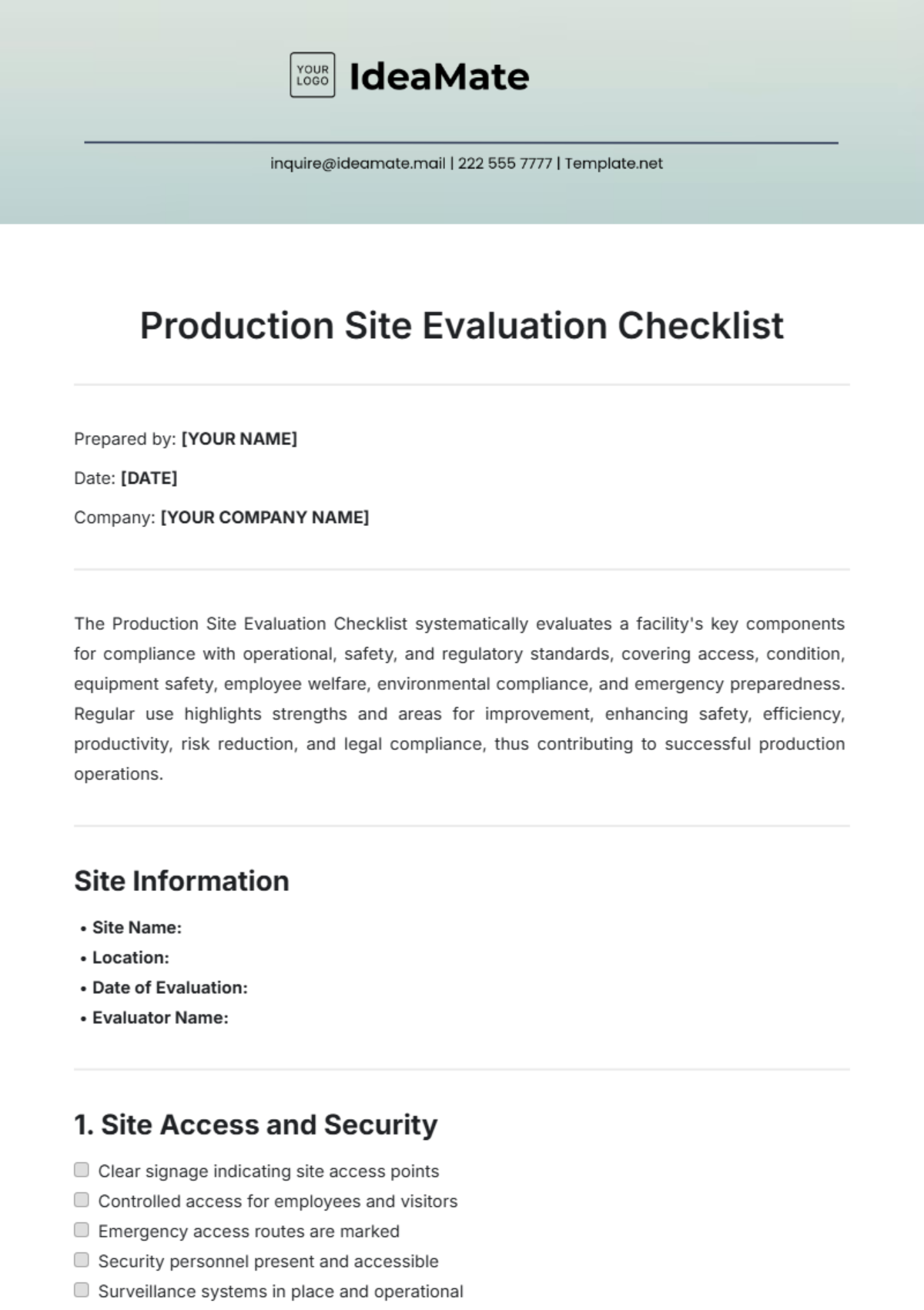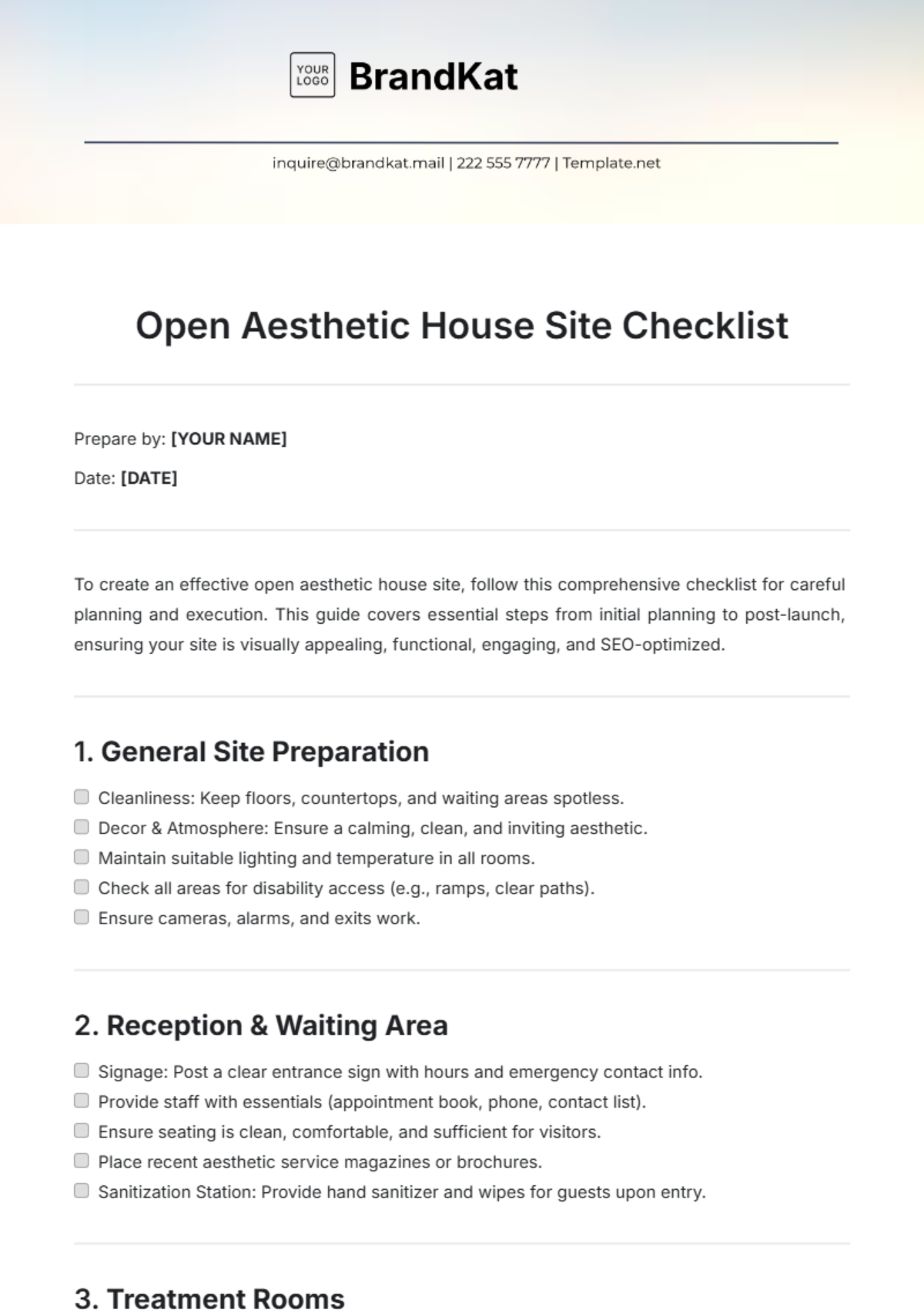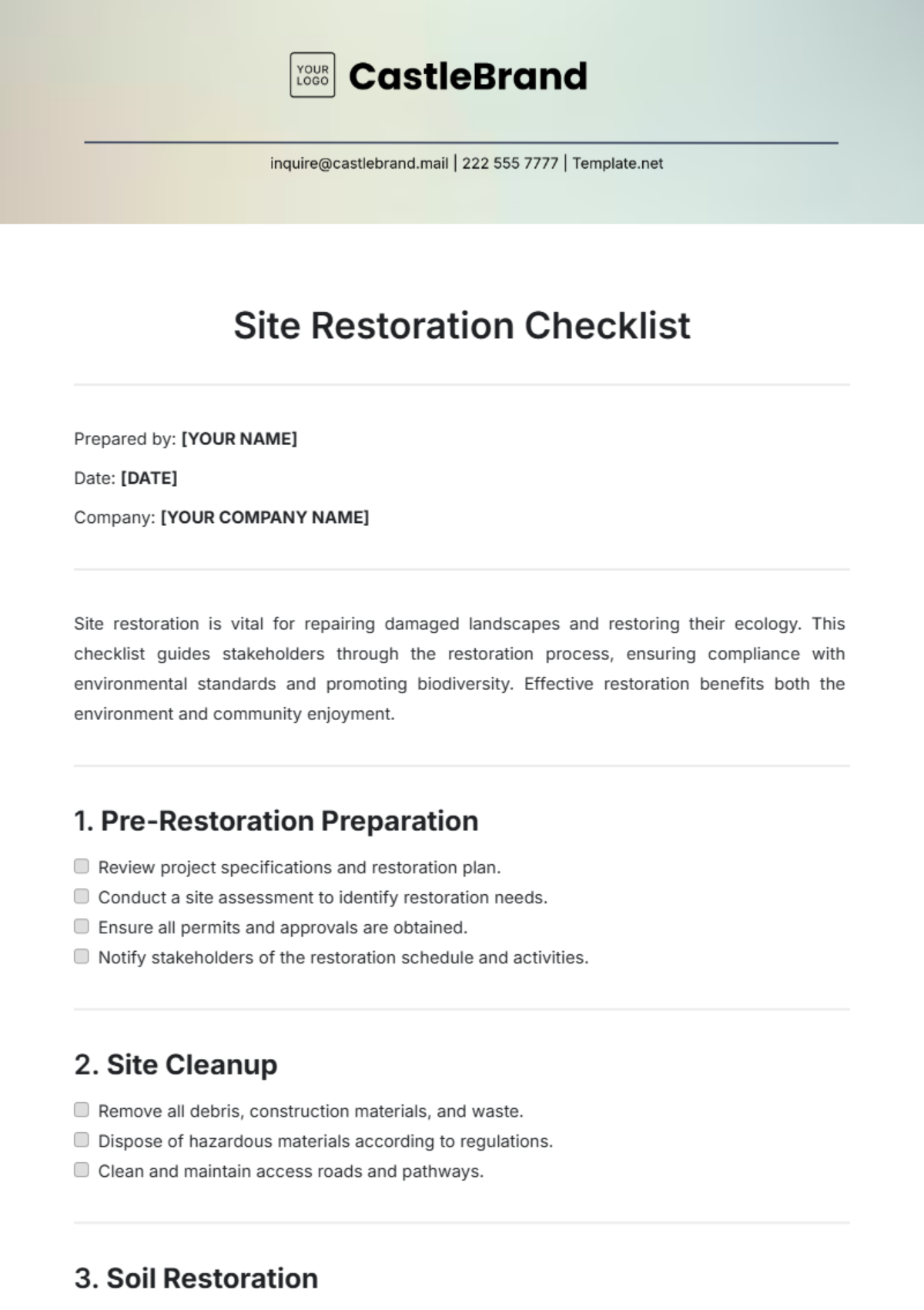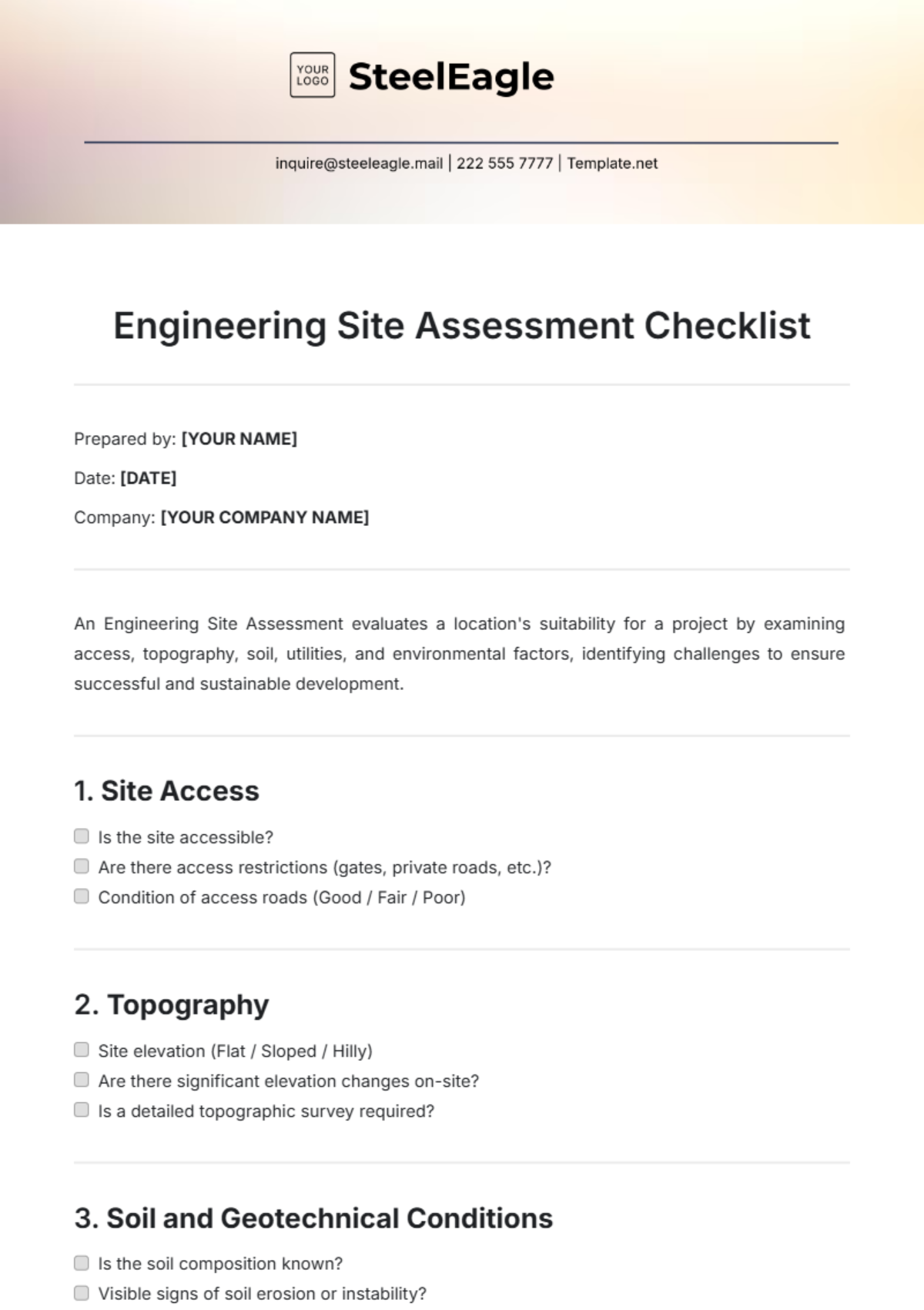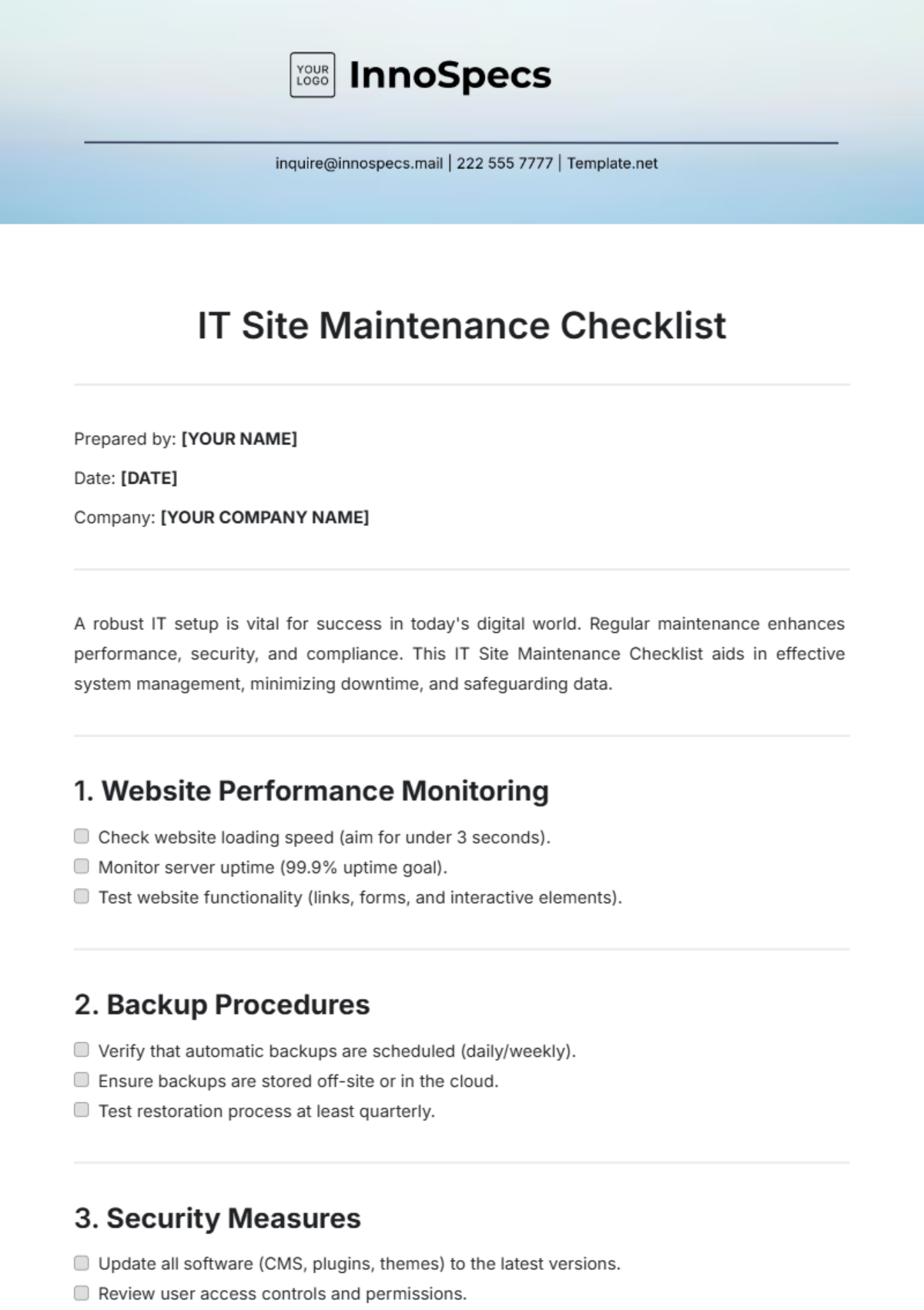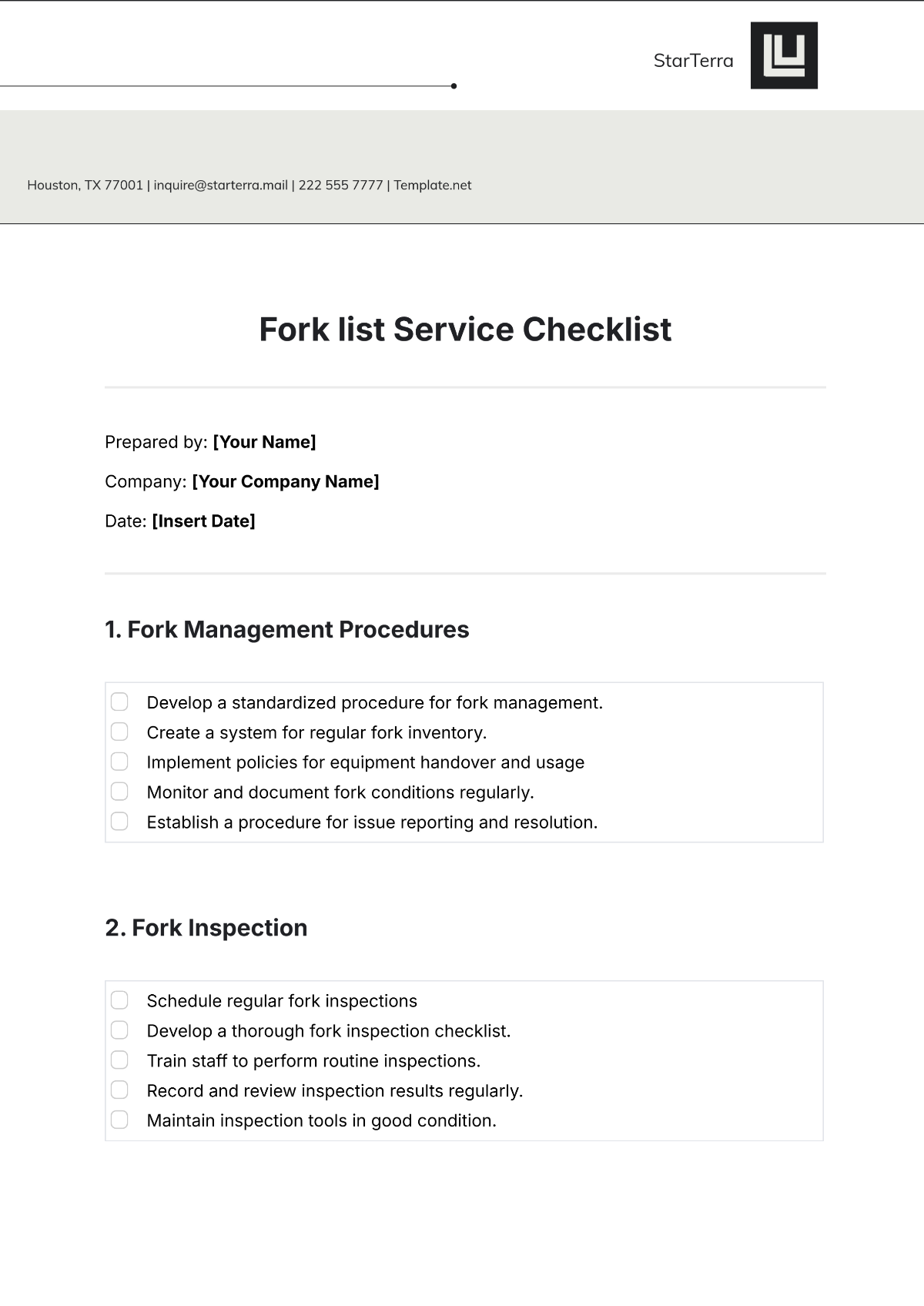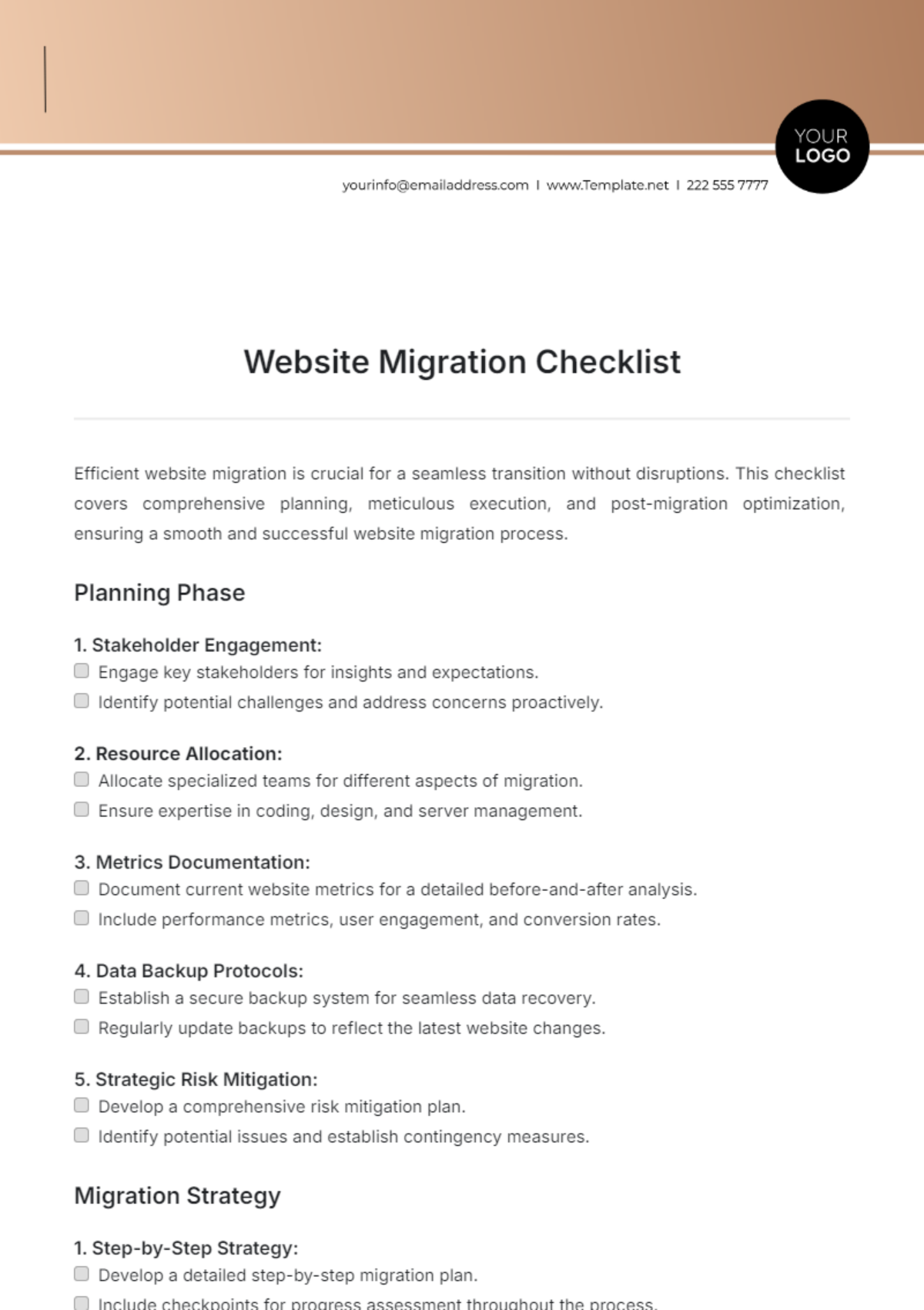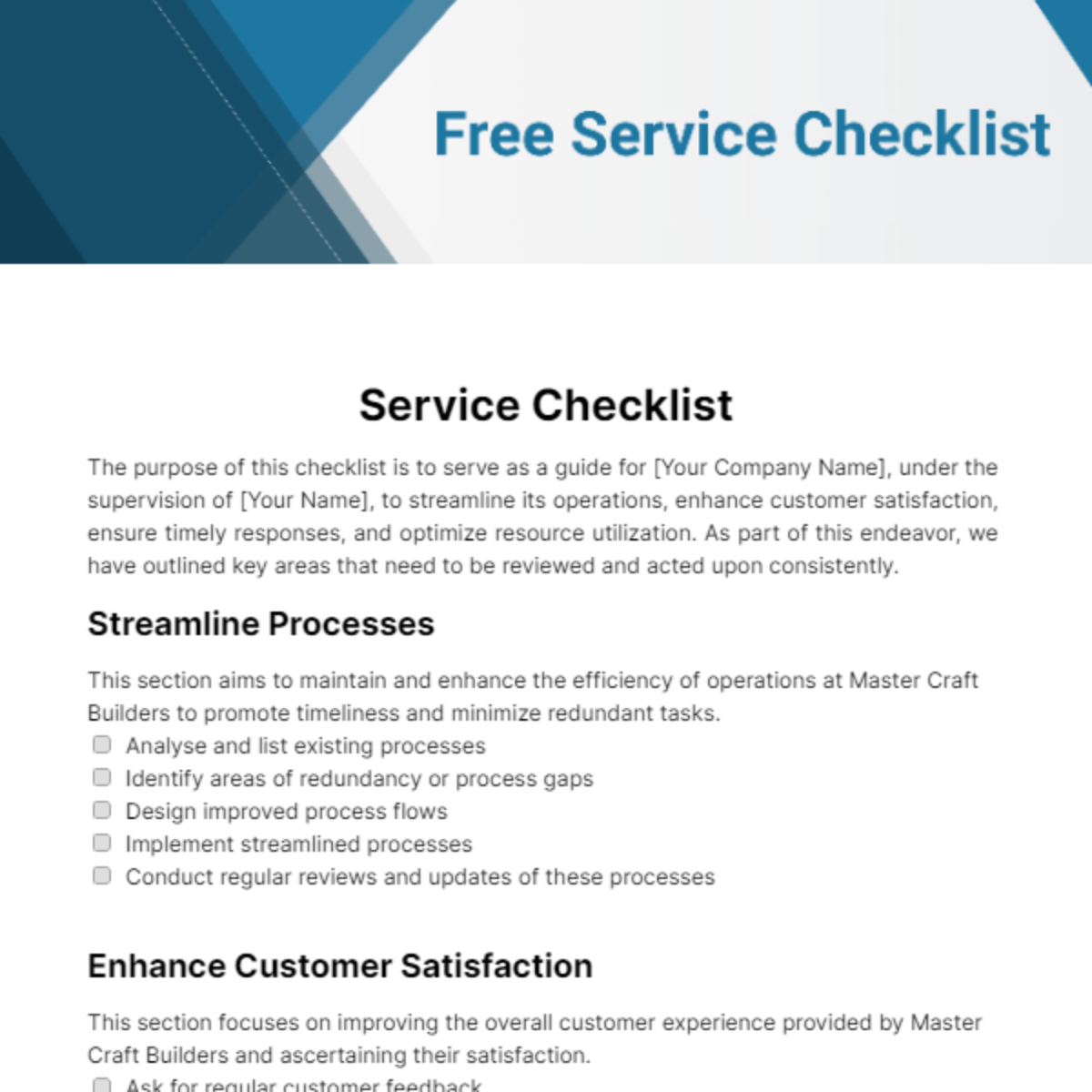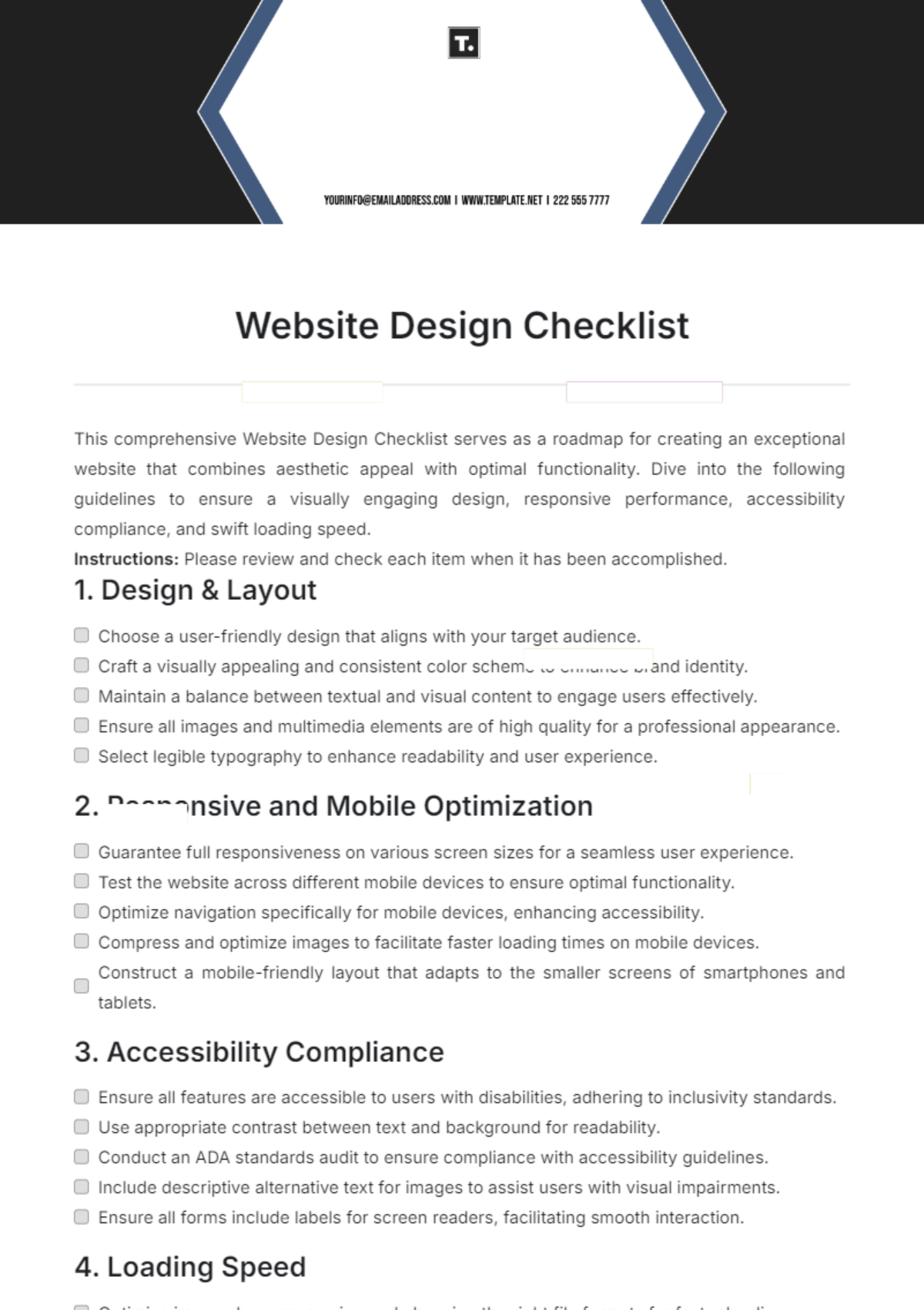Site Assessment
This checklist is designed to optimize the assessment processes of potential sites for the [Your Company Name], enabling the selection of locations that strategically align with the brand values and operational needs. The checklist takes an integrated approach, woven with compelling narratives demonstrating brand value, identity, and authentic engagement.
Objectives:
Aid in the site selection process
Ensure the sites match operational requirements
Maximize brand identity in different locales
Physical Characteristics:
Evaluate the topography, soil composition, and geological features of the site.
Document the dimensions, boundaries, and existing natural elements such as water bodies or vegetation.
Consider how these physical characteristics may impact construction feasibility and environmental sustainability.
Zoning and Regulatory Compliance:
Examine the zoning regulations applicable to the site and assess land-use designations.
Confirm compliance with local zoning restrictions, setbacks, and other regulatory requirements.
Identify any variances or special permits needed for the proposed use or development.
Environmental Considerations:
Conduct an environmental impact assessment to identify potential ecological sensitivities.
Evaluate the presence of protected species, wetlands, or other environmentally significant features.
Develop strategies to minimize the environmental impact of proposed activities.
Infrastructure and Utilities:
Identify the availability and capacity of utilities such as water, electricity, and sewer systems.
Assess the condition of existing infrastructure, including roads, transportation networks, and telecommunication.
Verify the feasibility of connecting the site to necessary utilities.
Accessibility and Transportation:
Evaluate the site's accessibility by road, public transportation, and pedestrian pathways.
Assess potential traffic impacts and parking requirements.
Identify opportunities to enhance transportation connectivity and accessibility.
Cultural and Historical Significance:
Investigate any cultural or historical significance associated with the site.
Assess the potential impact of development on historical structures or archaeological resources.
Comply with preservation regulations and incorporate strategies for heritage conservation.
Microclimate Analysis:
Analyze the local climate, considering temperature ranges, precipitation, and seasonal variations.
Assess microclimate conditions on the site, including wind patterns and sun exposure.
Incorporate climate-responsive design strategies for energy efficiency and occupant comfort.
Market Analysis:
Evaluate the economic viability of the project by considering market demand and trends.
Assess the competitive landscape and potential challenges in the local real estate market.
Identify opportunities to align the project with market needs and preferences.
Social and Community Context:
Understand the social fabric and demographic characteristics of the surrounding community.
Identify community needs, preferences, and potential impacts on the social environment.
Engage with local stakeholders to gather input and foster community collaboration.
Risk Assessment:
Identify potential risks and challenges associated with the site, such as environmental hazards or legal constraints.
Develop risk mitigation strategies to address challenges and uncertainties.
Ensure compliance with safety standards and regulatory requirements.
Financial Feasibility:
Conduct a preliminary cost analysis for site acquisition, development, and infrastructure.
Evaluate potential funding sources and financing options.
Assess the financial feasibility of the project within budgetary constraints.
